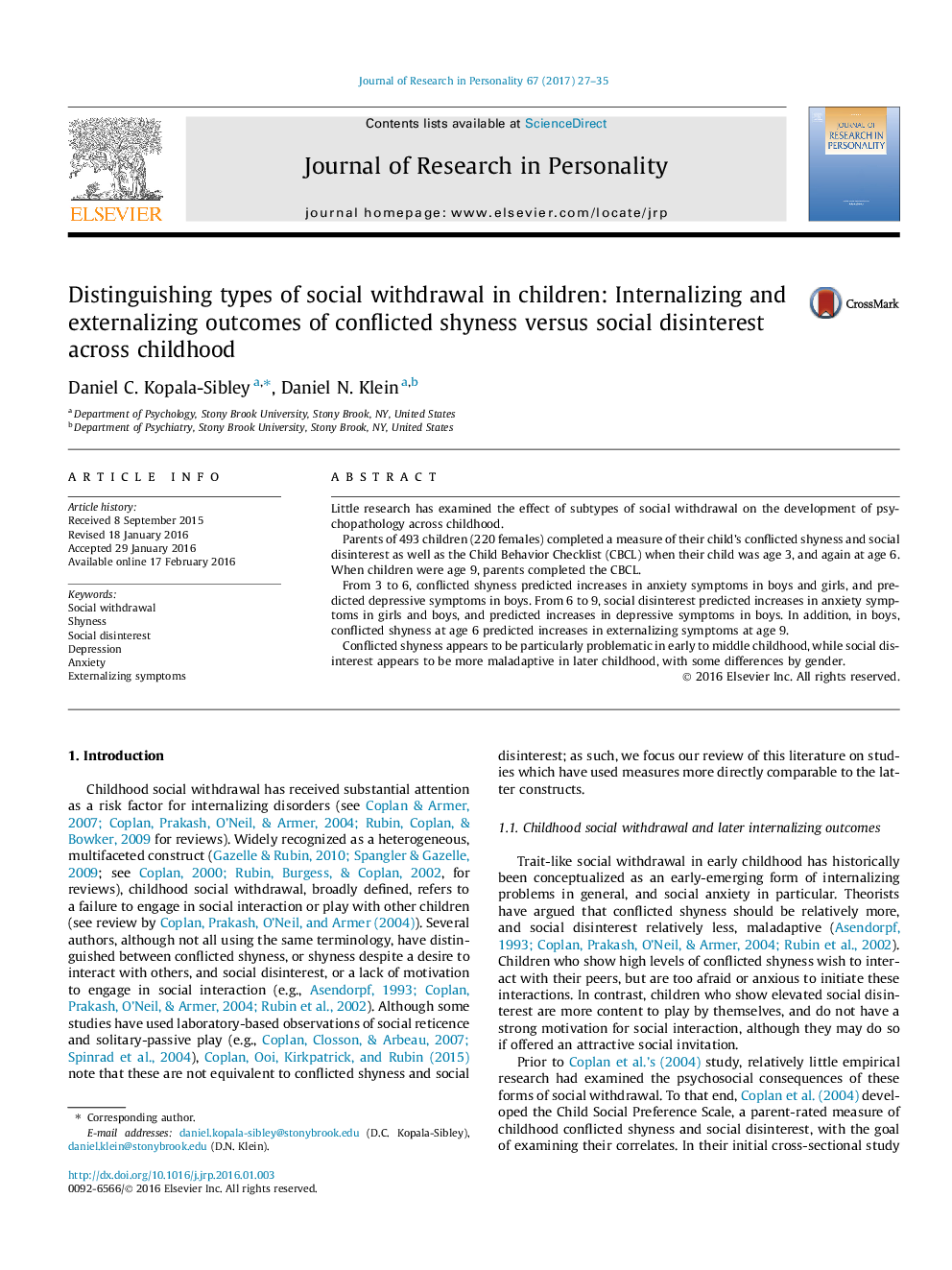| Article ID | Journal | Published Year | Pages | File Type |
|---|---|---|---|---|
| 5046203 | Journal of Research in Personality | 2017 | 9 Pages |
â¢Social withdrawal relates to internalizing and externalizing outcomes across childhood.â¢In girls and boys, conflicted shyness at age 3 predicts anxiety at age 6.â¢In boys, conflicted shyness at 3 predicts depressive symptoms at age 6.â¢In girls and boys, social disinterest at age 6 predicts anxiety symptoms at age 9.â¢In boys, conflicted shyness at age 6 predicts externalizing symptoms at age 9.
Little research has examined the effect of subtypes of social withdrawal on the development of psychopathology across childhood.Parents of 493 children (220 females) completed a measure of their child's conflicted shyness and social disinterest as well as the Child Behavior Checklist (CBCL) when their child was age 3, and again at age 6. When children were age 9, parents completed the CBCL.From 3 to 6, conflicted shyness predicted increases in anxiety symptoms in boys and girls, and predicted depressive symptoms in boys. From 6 to 9, social disinterest predicted increases in anxiety symptoms in girls and boys, and predicted increases in depressive symptoms in boys. In addition, in boys, conflicted shyness at age 6 predicted increases in externalizing symptoms at age 9.Conflicted shyness appears to be particularly problematic in early to middle childhood, while social disinterest appears to be more maladaptive in later childhood, with some differences by gender.
